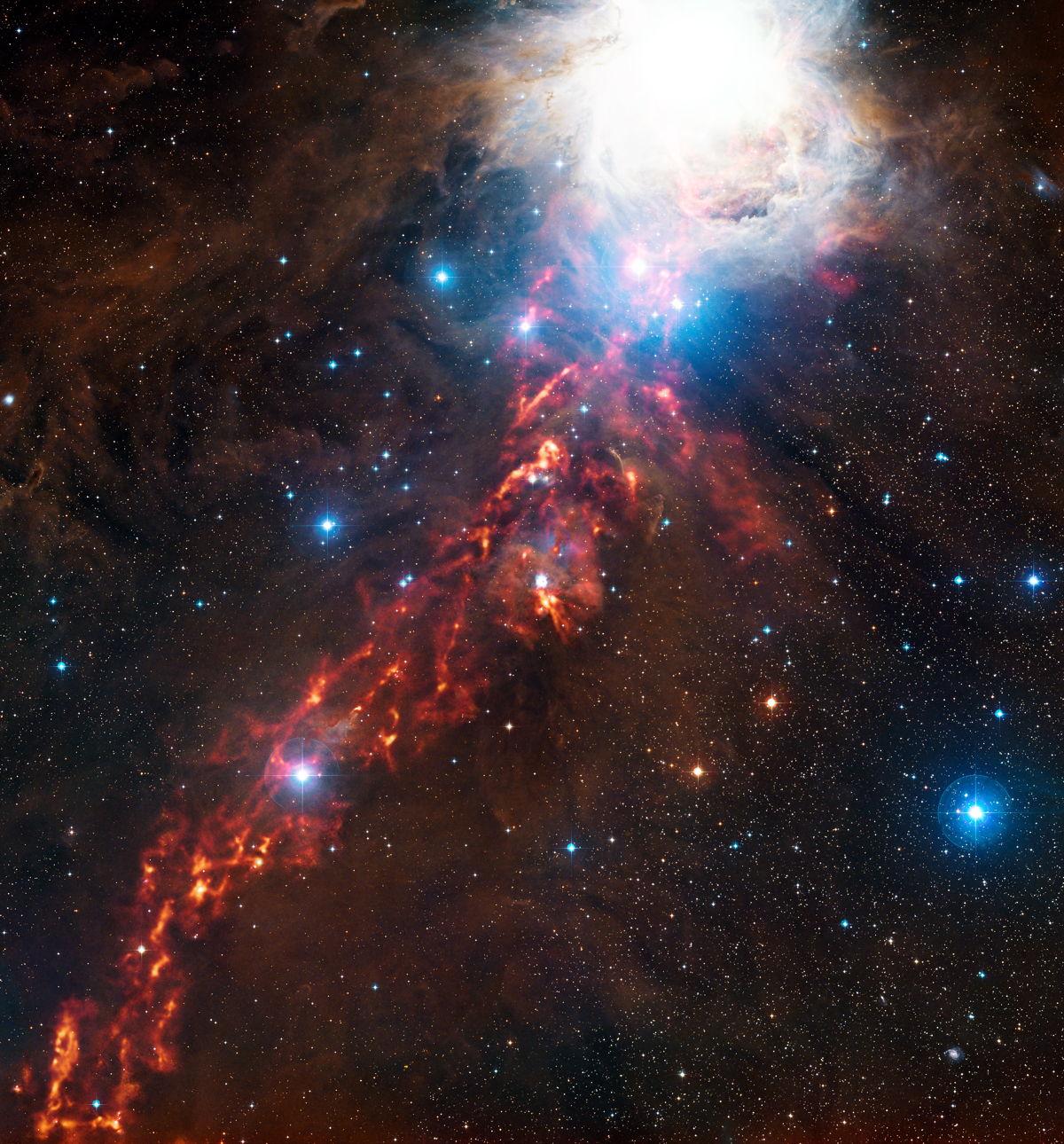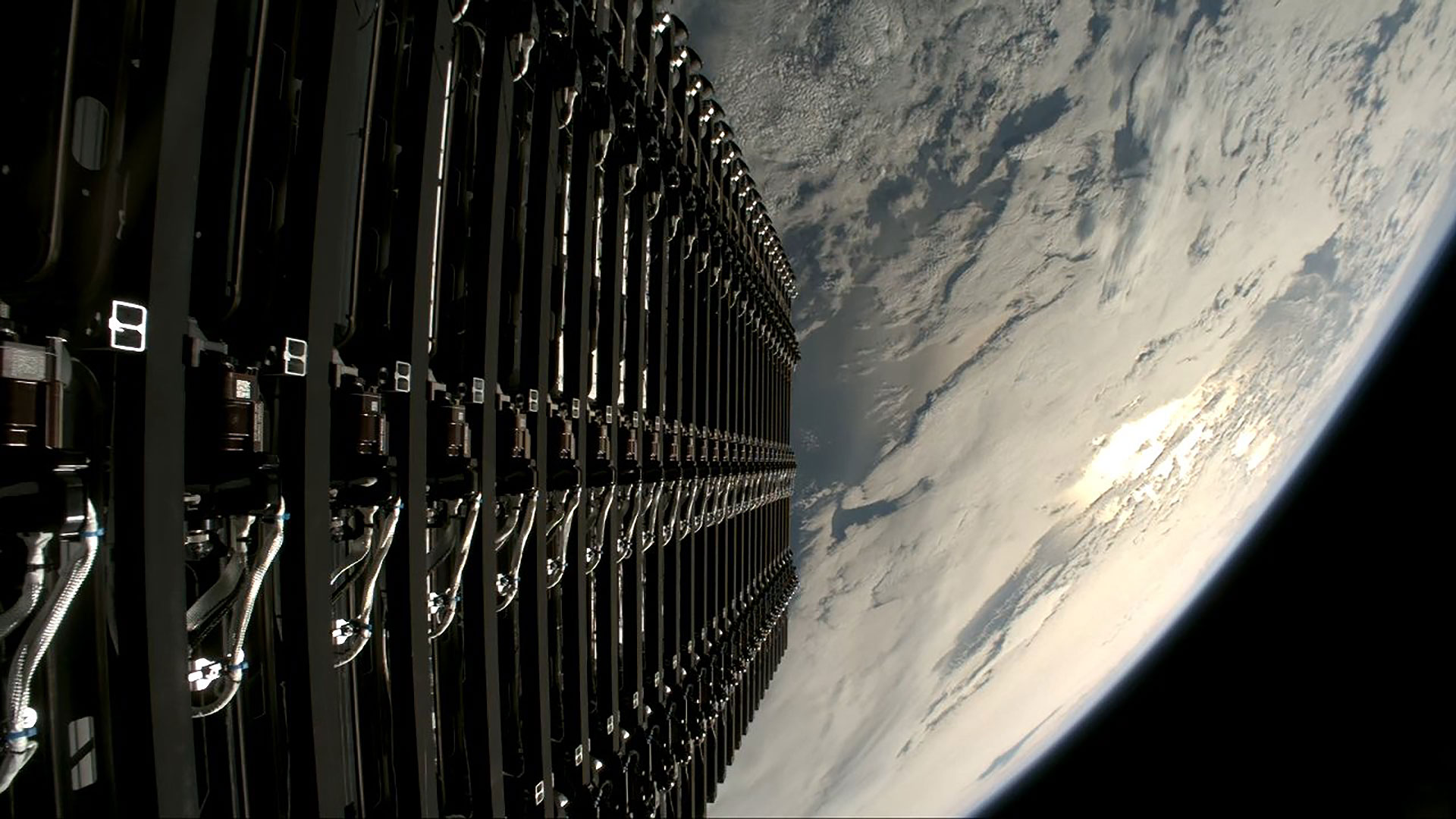Telescope Reveals Spectacular 'Fiery Ribbon' in Orion Nebula (Photos)

A telescope in Chile has captured stunning new photos of a cosmic ribbon shimmering in the Orion nebula more than 1,000 light-years from Earth.
The new images — released by the European Southern Observatory today (May 15) — show what scientists described as a "fiery ribbon" of red gas and dust shining in the constellation Orion's belt. The ribbon is a small part of a huge star-forming region of the universe.
ESO scientists used a telescope in Chile to craft a video tour of the clouds of dust that combine to create new stars. [See more jaw-dropping photos of the Orion Nebula]
"The large bright cloud in the upper right of the image is the well-known Orion Nebula, also called Messier 42," ESO officials wrote in a news release. "It is readily visible to the naked eye as the slightly fuzzy middle 'star' in the sword of Orion. The Orion Nebula is the brightest part of a huge stellar nursery where new stars are being born, and is the closest site of massive star formation to Earth."
Although the clouds of dust and gas in the red-tinted image might look as if they're burning hot, they are actually freezing cold. ESO's APEX telescope in Chile took the photo in wavelengths invisible to the human eye. In this image, the hottest object glow blue while the coolest have an orange tint.
The second, more neutrally colored photo shows the same part of the sky in the visible spectrum of light. In that image, the fiery band disappears from view because chilled particles of dust block light from shimmering through.
"At submillimeter wavelengths, rather than blocking light, the dust grains shine due to their temperatures of a few tens of degrees above absolute zero," ESO officials wrote.
Breaking space news, the latest updates on rocket launches, skywatching events and more!
The dust clouds are manipulated by stellar winds and gravitational collapse that create the "beautiful filaments, sheets and bubbles" that appear in the photos, ESO officials said. Gas blown out from the atmospheres of stars actually forms the wind that gives the clouds their shape, ESO officials added.
These photos have also helped astronomers seek out unusual objects in this region of the universe. Using this and other data, scientists think they may have found 15 protostars — an early phase in star formation — that pop out more brightly in submillimeter wavelengths.
"These newly discovered rare objects are probably among the youngest protostars ever found, bringing astronomers closer to witnessing the moment when a star begins to form," ESO officials said.
The European Southern Observatory project is considered the most productive ground-based astronomical observatory in the world, officials have said. Fifteen countries make up ESO.
Follow Miriam Kramer on Twitter and Google+. Follow us on Twitter, Facebook and Google+. Original article on SPACE.com.

Miriam Kramer joined Space.com as a Staff Writer in December 2012. Since then, she has floated in weightlessness on a zero-gravity flight, felt the pull of 4-Gs in a trainer aircraft and watched rockets soar into space from Florida and Virginia. She also served as Space.com's lead space entertainment reporter, and enjoys all aspects of space news, astronomy and commercial spaceflight. Miriam has also presented space stories during live interviews with Fox News and other TV and radio outlets. She originally hails from Knoxville, Tennessee where she and her family would take trips to dark spots on the outskirts of town to watch meteor showers every year. She loves to travel and one day hopes to see the northern lights in person. Miriam is currently a space reporter with Axios, writing the Axios Space newsletter. You can follow Miriam on Twitter.

